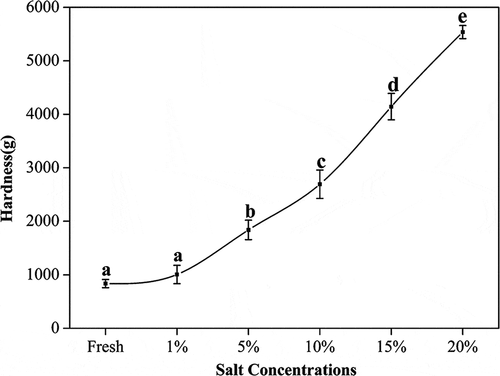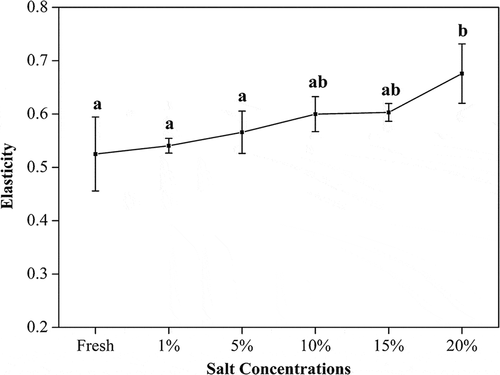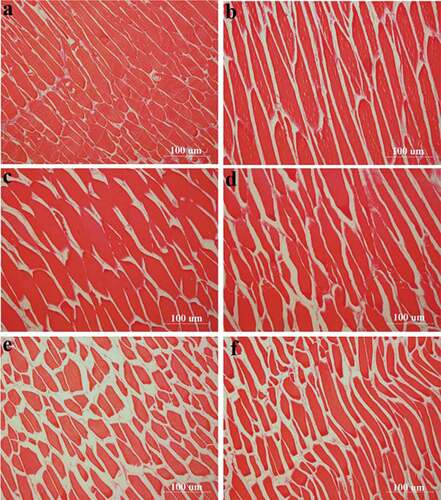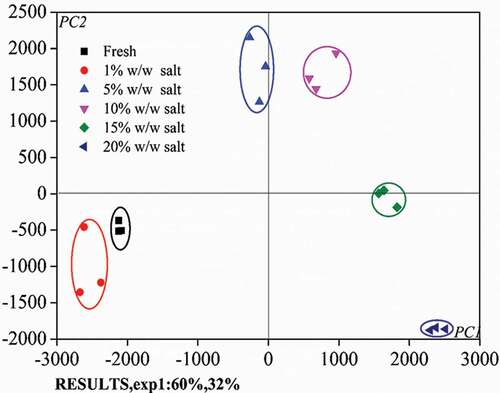Figures & data
Figure 1. Effect of salt on WHC of turbot (mean ± SD, n = 4). *Different letters indicate significant differences (p < 0.05) between treatments.

Figure 2. Effect of salt on hardness of turbot (mean ± SD, n = 4). *Different letters indicate significant differences (p < 0.05) between treatments.

Figure 3. Effect of salt on elasticity of turbot (mean ± SD, n = 4). *Different letters indicate significant differences (p < 0.05) between treatments.

Table 1. NMR parameters obtained from different treatments with turbot.
Table 2. Least-square means of histological variables as affected by salt concentration.
Table 3. The correlation analysis of low-field NMR, WHC, TPA, and histology microstructure data.



